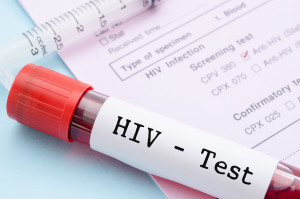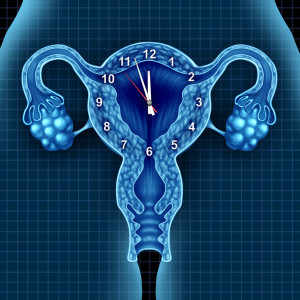 Gestational diabetes is a form of the metabolic disease that impacts pregnant women who do not have a previous history of diabetes, but who have high blood glucose levels during their pregnancy. The Centers for Disease Control and Prevention (CDC) estimate that in 2014 as many as 9.2 percent of pregnant women suffered from this condition. If you are pregnant or trying to become pregnant, understand the risks and treatment options available to help ensure a safe and healthy pregnancy.
Gestational diabetes is a form of the metabolic disease that impacts pregnant women who do not have a previous history of diabetes, but who have high blood glucose levels during their pregnancy. The Centers for Disease Control and Prevention (CDC) estimate that in 2014 as many as 9.2 percent of pregnant women suffered from this condition. If you are pregnant or trying to become pregnant, understand the risks and treatment options available to help ensure a safe and healthy pregnancy.
Causes
The causes of gestational diabetes are not completely known, however it is believed that hormones from the placenta that help the infant during development begin to block the action of the mother’s insulin into her own body. When proper insulin levels decline, glucose cannot leave the blood to be converted into energy, instead building up in the blood in unsafe levels, a condition known as hyperglycemia.
Risk Factors
All pregnant women are at risk of developing gestational diabetes, however some women are at a higher risk. Risk factors for gestational diabetes include:
- Age. Women age 25 or older during their pregnancy are more likely to develop gestational diabetes.
- Weight. Women with a body mass index (BMI) of 30 or higher are more likely to develop gestational diabetes.
- Family history. Women who have a close relation, such as a parent or sibling, that has previously been diagnosed with type 2 diabetes are at a greater risk for gestational diabetes.
- Personal health history. Those who have suffered from prediabetes are at a greater risk of gestational diabetes. Prediabetes is a condition defined by slightly elevated blood sugar that may be a precursor to type 2 diabetes. Women are also at a greater risk if they were diagnosed with the condition during a previous pregnancy, if they delivered a stillbirth, or if they delivered a baby who weighed more than nine pounds.
- Race. While experts are uncertain of the reason, women who are African American, Hispanic, American Indian, or Asian are more likely to develop gestational diabetes.
Potential Impact to Mother and Baby
Gestational diabetes impacts the mother in late pregnancy after the baby’s body has been formed. Untreated or poorly controlled gestational diabetes can have serious consequences on infants. Women with gestational diabetes experience an overuse of the pancreas as it works to produce insulin that is ultimately ineffective in lowering blood glucose levels. The high levels of blood glucose are eventually transferred to the baby through the placenta, causing the baby’s pancreas to overproduce insulin as well. Eventually, the extra, unneeded energy is stored by the baby as excess fat, a condition known as macrosomia.
Babies with macrosomia face several potential health risks, including damage to their shoulders during birth, low blood glucose levels at birth due to extra insulin levels, and breathing problems. Later in life, the babies are at a higher risk of suffering from obesity and type 2 diabetes.
Testing
Your OBGYN will likely evaluate your risk factors for gestational diabetes early in your pregnancy. Based on those factors, he or she will help determine a screening frequency to identify any risk factors early. For example, women at high risk may be tested at their very first prenatal visit, while women at average risk will likely be screened during the second trimester.
Women diagnosed with gestational diabetes will require frequent checkups, especially during the final trimester. During these exams, and possibly even in between visits through self-testing, their blood sugar will be monitored. Your OBGYN may also prescribe insulin to help control your blood sugar.
Directly after the birth, your OBGYN will likely check your blood sugar and will want to test it again in six to 12 weeks to determine if levels have returned to normal. Even with an eventual normal reading, women who have been diagnosed with gestational diabetes should receive a diabetes screening at least every three years.
Treatment
In addition to constant monitoring of blood sugar levels, there are treatment options available for women to manage gestational diabetes, including:
- Following a healthy diet high in fruits, vegetables, and whole grains.
- Receiving regular exercise, which helps lower blood sugar by stimulating the body to move glucose into cells and use it as energy.
- The use of insulin, which is prescribed for 10 – 20 percent of women suffering from gestational diabetes.
Every woman strives for a healthy pregnancy. Talk to the doctors at Chouchani, Sayegh and Bagnarello about the factors that may impact your risk for developing gestational diabetes. Our doctors will work with you to help identify any threats early to keep you and your new loved one safe and healthy.
More
 The terms HIV and AIDS are powerful. They can instill fear, conjuring images of a terminal disease that causes years of painful suffering, isolation, social stigmas, and the risk of infecting those you love. HIV and AIDS are serious diseases with deadly consequences, but when fear of a diagnosis leads to an avoidance of testing, you only put yourself, and your loved ones, at a greater risk. According to a recent survey published in AIDS and Behavior, the majority of people who do not seek out testing for HIV and AIDS are either afraid of the test or afraid of getting a positive diagnosis. If you are one of the millions of Americans avoiding the HIV test, put your fears aside and consider the dangers you put yourself in by living in denial.
The terms HIV and AIDS are powerful. They can instill fear, conjuring images of a terminal disease that causes years of painful suffering, isolation, social stigmas, and the risk of infecting those you love. HIV and AIDS are serious diseases with deadly consequences, but when fear of a diagnosis leads to an avoidance of testing, you only put yourself, and your loved ones, at a greater risk. According to a recent survey published in AIDS and Behavior, the majority of people who do not seek out testing for HIV and AIDS are either afraid of the test or afraid of getting a positive diagnosis. If you are one of the millions of Americans avoiding the HIV test, put your fears aside and consider the dangers you put yourself in by living in denial.
According to the U.S. Centers for Disease Control (CDC) approximately 13 percent of the more than 1.2 million Americans with HIV are unaware that they have the virus, which means they could be spreading it further without knowing they are putting others at risk. Noticing any unusual signs or symptoms that could be indicative of a sexual transmitted disease (STD) is scary, but just hoping that the symptoms will go away on their own will only leave you in greater danger. Diagnosing HIV early is crucial both to an effective treatment plan, and to stop its spread. Early detection also reduces rates of mortality and morbidity.
Know Your HIV Status
All women should know their HIV status for these four reasons:
- Many new HIV infections are caused by people unaware that they are infected.
- HIV medicines are more effective when treatment begins early.
- Starting treatment early can mean the best health for you, and for a longer time, before you develop AIDS or other infections. When HIV is not identified until it has progressed to advanced stages, treatment options are limited.
- If you are pregnant, there are precautions you can take to avoid passing HIV to your baby.
It can take between two weeks and three months after infection for HIV antibodies to be found in your blood. It may take up to three months for an HIV test to be positive if you have reason to believe that you may have recently been infected. Talk to your doctor about how frequently you should be tested, given your lifestyle and risk factors.
Get Tested
To help save your own life, and the lives of your loved ones, set your fears aside and get tested:
- At least once after becoming sexually active.
- If you are pregnant.
- If you are having unprotected sex with more than one partner.
- If you are, or have, injected drugs.
- If you are having sex with someone to get money or drugs in return, or have had sex with someone who has traded sex for money or drugs.
- If you have another sexually transmitted infection (STI).
- If you had a blood transfusion between 1978 and 1985.
AIDS and HIV are serious diseases, and being afraid of contraction is understandable, but living in denial that you could be carrying a serious illness won’t keep you or your loved ones safe. Early detection provides the only hope for effective treatment and longevity. Living a lifestyle that mitigates risk factors will help keep you safe. Even if you believe you are not at risk, getting tested will only reaffirm your peace of mind and help diminish the fear and stigma that surrounds testing.
And if you have any questions or fears, discuss them with your doctor. These discussions are 100% confidential.
More
 Miscarriages are saddening medical occurrences that happen more often than is realized, yet the couples who suffer them rarely speak of their losses. Whether their silence is born out of a fear that the sympathies of others may make the loss more emotionally distressing, or out of a greater fear that a pregnancy may never be possible, miscarriages are often an emotional burden that too many couples bear alone. Such isolation is unnecessary, however, as approximately 10 to 20 percent of known pregnancies end in miscarriage, and as many as 50 percent of pregnancies are miscarried so early that the pregnancy is not even known. Though the early termination of any pregnancy can be heart breaking, couples looking to conceive should take comfort in knowing that they are not to blame or at fault for the loss of their fetus. Understanding the truths and overcoming the misperceptions of miscarriages can give comfort to those recovering from such a loss.
Miscarriages are saddening medical occurrences that happen more often than is realized, yet the couples who suffer them rarely speak of their losses. Whether their silence is born out of a fear that the sympathies of others may make the loss more emotionally distressing, or out of a greater fear that a pregnancy may never be possible, miscarriages are often an emotional burden that too many couples bear alone. Such isolation is unnecessary, however, as approximately 10 to 20 percent of known pregnancies end in miscarriage, and as many as 50 percent of pregnancies are miscarried so early that the pregnancy is not even known. Though the early termination of any pregnancy can be heart breaking, couples looking to conceive should take comfort in knowing that they are not to blame or at fault for the loss of their fetus. Understanding the truths and overcoming the misperceptions of miscarriages can give comfort to those recovering from such a loss.
Timing
The majority of miscarriages occur during the first 13 weeks after conception. Since many women wait to share news of their pregnancy with family and friends until after the first trimester, many of the miscarriages that occur during the first thirteen weeks are often unknown by anyone other than the mother and father.
Truth: A great number of miscarriages occur so early that even the couple is unaware that an embryo had formed.
Causes
Though it is commonly believed that lifting heavy objects, participating in dangerous activities, and long-term stress can cause miscarriages, none of these factors have been proven to be valid risk factors. It is believed that the majority of miscarriages are caused by genetic abnormalities within the embryo that would prevent a baby from fully developing healthily and surviving after birth. About 60 percent of the time, miscarriages occur when the embryo or fetus has an abnormal number of chromosomes. In addition, some illnesses may place a woman at a greater risk for miscarriage, including some viral infections, thyroid disease, and diabetes.
Truth: Fatal genetic errors are not usually caused by the mother’s genetics.
Risk Factors
Some of the risk factors that may lead to a miscarriage include:
- An older maternal age
- Extremely low or high maternal weight
- Moderate to high alcohol consumption during pregnancy
- Smoking or illicit drug use during pregnancy
- Use of nonsteroidal anti-inflammatory drugs (NSAID) around the time of conception
- Uterine trauma
- Previous miscarriage(s)
About 5 percent of women have recurrent miscarriages, a condition defined by three or more losses. In most of these cases, however, the recurrent miscarriages are caused by underlying health issues such as a structural problem with the uterus, thyroid problems, hormonal imbalances, or clotting disorders.
Truth: Most women who miscarry go on to have a successful pregnancy and give birth to a healthy baby.
Prevention
In order to be best positioned to deliver a baby to full term, women should maintain a healthy weight through proper nutrition and exercise, should not consume drugs or alcohol, and should be screened and treated if necessary for any sexually transmitted diseases (STD). In addition, pregnant women should take a folic acid supplement, avoid possible radiation exposure, and avoid contact sports.
Truth: In most cases, fully preventing a miscarriage is outside of a woman’s control.
The loss of any child at any time is devastating, however women must understand that as long as they lead a healthy lifestyle and avoid drugs and alcohol and other risky behaviors, they are giving their fetus the best possible chance for a healthy birth. For the many women who experience a miscarriage caused by genetic factors outside of their control, they should not take on the burden of guilt, or the feeling that the loss was their fault. Rather, they should emotionally and physically prepare themselves to try again to carry a baby full term, since for the great majority of women who miscarry, a healthy and happy baby is still on the horizon.
Whether you are pregnant or planning on becoming pregnant, it’s important to see your OB-Gyn. Our office is currently accepting new patients. Call for an appointment today.
More
 Eighty-five percent of women experience the discomfort of premenstrual syndrome (PMS) every month. If you are among those who suffer with such symptoms as cramps, bloating, and mood swings prior to the onset of your period, take comfort in knowing that there are many natural, and healthy ways to manage the symptoms of PMS. Consider the list below of eight tips for managing PMS.
Eighty-five percent of women experience the discomfort of premenstrual syndrome (PMS) every month. If you are among those who suffer with such symptoms as cramps, bloating, and mood swings prior to the onset of your period, take comfort in knowing that there are many natural, and healthy ways to manage the symptoms of PMS. Consider the list below of eight tips for managing PMS.
- Get moving. While you may be tempted to stay in bed until your PMS symptoms improve, being active may actually help you feel better. Many women find that 30 minutes or more of cardiovascular exercise helps to specifically ease feelings of sadness and anxiety that they experience during their periods.
- Eat healthfully. It is particularly important in the days directly proceeding your period to increase your consumption of fruits, vegetables, and whole grains while reducing the amount of sugar, artificial sweeteners, salt, and fat that you consume. The complex carbohydrates in whole grains, in particular, have been shown to enhance your mood. Researchers have also found that an increase in certain fatty acids, like the omega-3s, can lessen irritability and reduce pain and discomfort.
- Reduce alcohol. Reduce the amount of alcohol that you consume premenstrually. Alcohol is a depressant, which can enhance your mood swings, increase your anxiety, and feelings of depression or sadness.
- Limit caffeine. Reduce the amount of caffeine that you consume prior to the beginning of your period. Research has shown that the effects of caffeine are magnified premenstrually, leading to greater breast tenderness, more nervousness, and potentially more irritability. Aside from your morning cup of coffee, consider limiting the amount of caffeine that you consume from tea, cocoa, and chocolate as well. If you miss your warm morning beverage, switch to naturally caffeine-free chamomile tea, which contains properties that relieve muscle spasms, and may therefore help reduce the severity of menstrual cramps.
- Get enough sleep. If you are among the many women who lose sleep due to their monthly hormonal shifts, you may wake up on premenstrual days feeling irritable and moody. Try to get at least seven to nine hours of sleep on the days proceeding your period. If you are struggling to get solid hours of sleep at night, consider a short nap during the day.
- If you are a smoker – quit. Not that you needed another reason to crush this bad habit, but if you are a smoker that experiences painful and discomforting PMS symptoms, know that your smoking habit could be making your symptoms worse. A study of more than 3,000 women showed that those who smoked were more than twice as likely to develop moderate or severe PMS symptoms than those who never smoked.
- Manage your stress. If the most uncomfortable PMS symptom that you experience is an increase in feelings of stress and anxiety, consider finding healthy ways to combat these feelings through such practices as yoga, meditation, acupuncture, massage, or even simple deep breathing exercises.
- Increase your calcium. Supplement your diet during your period with extra calcium. Adding a daily dose of 1200 milligrams of calcium has been shown to ease PMS symptoms for many women.
More
 Why You May be Safer Giving Birth in a Hospital than at Home
Why You May be Safer Giving Birth in a Hospital than at Home
The birth of a child should be comfortable, and emotionally satisfying life experience. More importantly, however, it should be a safe experience for both mother and baby. While the number of planned home births is increasing, women considering delivering their babies in a non-hospital setting should be aware of the risk factors associated with home births before they make their delivery plans.
The reasons that women cite for wanting a home birth include:
- The perception that it will be more cost-effective
- A desire to receive minimal, or no medications during delivery
- Religious, philosophical, and cultural preferences
- A desire to have access to their own space, clothes, and bathroom
The most common reason that women give for wanting a home birth however, is a desire to feel the comfort and security of their own home where they are surrounded by family, friends, and health care providers of their choosing.
While the number of planned home births has risen, recent studies have shown that the lack of access to hospital critical care services may put the mother, though more likely the newborn, at a higher risk of complications and even death. New research indicates that the risk of a baby dying at birth, or shortly after, is nearly four times higher when delivered by a midwife in a home setting, compared to deliveries by a midwife in a hospital. Women experiencing their first delivery are at an even greater risk for infant mortality when delivering in a home setting.
If complications with the birth occur during the delivery, a home setting does not provide immediate access to critical care services. During a delivery, every second is crucial to obtaining a successful birth outcome. One of the most common complications with any delivery is stillbirth. When urgent conditions occur, babies are in need of critical care that cannot be issued in a home. If any type of emergency occurs during labor, a woman and her baby would need to be transferred to a hospital setting for emergency care. This delay of critical treatment may make the difference between the life and death of the infant, or its mother.
For women considering a home birth, know that additional risks exist in certain circumstances. Home births are strongly cautioned against for women who:
- Have diabetes, chronic hypertension, a seizure disorder or any chronic medical condition
- Have previously had a cesarean section
- Develop a pregnancy complication, such as preeclampsia, prior to labor
- Are pregnant with multiples, or whose baby does not settle into a position that allows for a headfirst delivery prior to labor
- Are less than 37 weeks or more than 41 weeks pregnant
If you have concerns about the comfort and security that you will feel delivering in a hospital setting, know that your birth will be made most comfortable when you choose an OBGYN who you know and trust. Have a discussion with your chosen OBGYN regarding your birth plan. He or she will work with you to make the birth of your baby as comfortable, and safe, as possible.
And if you are looking for a doctor who puts the health and care of moms and babies first, please call Chouchani, Sayegh and Bagnarello MD. We are currently accepting patients at all three of our locations in Western New York.
More
 How Much Time Do You Really Have to Get Pregnant?
How Much Time Do You Really Have to Get Pregnant?
When asked “where do you see yourself after you graduate college?” many young women confidently reply by reciting a heavily considered, regimented life plan:
“I’m going to land my dream job by 22, get engaged to the man of my dreams by 25, we’ll move in together at 26, we’ll get engaged by 27, and get married by 29. By 30 I’ll have become a senior executive in my company, and my husband and I will have three kids before I’m 35, a boy, and two girls, in that order.”
While it may sound like a quintessential and highly responsible plan, the reality is that life sometimes takes us by surprise, leaving us making modifications to our “final” plan along the way. For women whose unexpected life events result in a delay in childbearing, many report that they begin to feel the metaphorical ticking of their biological clock – an internal feeling of foreboding that they need to have a baby soon “before it’s too late.” What is this feeling that we associate with a ticking clock? At what age do women really begin to lose fertility, and what steps should women who want to have a baby take to ensure the highest likelihood for conception?
The term “biological clock” often refers to a woman’s increased maternal instincts as they age and worry that they will soon be too old to successfully naturally conceive. There is debate as to whether the ticking clock is a true physical and psychological response, or a socialized experience.
What is a known fact, however, is that as women age, their fertility levels decrease. In general, the best age for women to get pregnant and carry a healthy baby to term is between the ages of 20 and 35. Once women enter their 40s, as many as 40 percent of pregnancies end in miscarriage, and by the time they reach 45, only ten percent of women are able to conceive naturally. This statistic is a concern to many women today, as the number of older mothers is rising as women prioritize education and career before having children. In 1999, only 16 percent of new mothers were over age 35. By 2008, that number had increased to 23 percent.
Women who want to conceive may be able to look to their family history to determine the longevity of their fertility. If a woman’s mother or grandmother was able to conceive naturally into her late thirties and forties, she may be able to as well. Women should also avoid smoking, excess alcohol and recreational drug use, as all of these can negatively impact egg quality. Women who want to conceive should also maintain a healthy diet, and should lead an active lifestyle to ensure a healthy weight, to minimize the chances of miscarriage.
For women with questions or concerns regarding their fertility, their best bet, is to speak to their physician. Simple tests can determine a woman’s fertility, and a doctor can provide options for increasing the likelihood of conception as well as maintaining a healthy pregnancy. If you are looking for a top Ob-gyn practice in Western New York, please give Chouchani, Sayegh and Bagnarello MD a call today. We are accepting new patients.
More
 As we discussed last week, heart disease is the No. 1 killer of women in this country. It causes 1/3 of women’s deaths each year approximately one woman every minute dies of heart disease. So what can you do to protect yourself from heart disease?
As we discussed last week, heart disease is the No. 1 killer of women in this country. It causes 1/3 of women’s deaths each year approximately one woman every minute dies of heart disease. So what can you do to protect yourself from heart disease?
Know Your Risk Factors
Eighty percent of women from the ages of 40 to 60 have one or more risk factors for heart disease—which dramatically increases your chance of developing a problem.
And it’s not just women over forty. Heart disease can begin as early as the teen years, and women in their 20s and 30s need to take action sooner rather than later to avoid worse complications later on.
Also, among U.S. women ages 18 and older, 17 percent are smokers. Sixty-four percent of women ages 20 and older are overweight, 27 percent have high blood pressure, and 45 percent have high cholesterol. These are all major risk factors for developing heart disease
Lower Your Risk
In addition to the risk factors above, you may have a genetic tendency toward heart disease, which is something you can’t control. But there are several lifestyle changes any woman can make to reduce the risk of heart disease:
- Quit smoking—or don’t start!
- Exercise 30 to 60 minutes a day most days; exercise for 60 to 90 minutes at a time if you need to lose weight.
- Maintain a healthy weight.
- Eat a diet that’s low in saturated fat, cholesterol and salt.
- Take prescribed medications appropriately, including blood pressure medications, blood thinners and aspirin.
- Manage other conditions that can contribute to heart disease, such as high blood pressure, high cholesterol and diabetes.
And remember, even if you exercise regularly and eat right, you may still have heart disease or a contributing factor. Maintain a good relationship with your doctor and make sure you visit regularly and discuss your family history and your current state of health honestly.
If necessary, work with your doctor to help yourself quit smoking, lose weight or eat better. It’s never too late to work toward a healthier life for yourself!
When you are a patient at Chouchani, Sayegh and Bagnarello, we care about your overall health and would be glad to help you find the solutions you need to lower your risk of heart disease.
More
 If you’re like thousands if not millions of Americans, you make New Year’s resolutions. And chances are, at least one of those resolutions has something to do with improving your health. Good for you! You only get one body in this lifetime, so taking care of it is important. Here’s how to succeed at keeping your resolutions:
If you’re like thousands if not millions of Americans, you make New Year’s resolutions. And chances are, at least one of those resolutions has something to do with improving your health. Good for you! You only get one body in this lifetime, so taking care of it is important. Here’s how to succeed at keeping your resolutions:
1. Write them down
Research has proved that people who write down their goals are more likely to achieve success. Break down your main goal—to lose weight, to eat better—into manageable steps. You can also break it down by time: monthly, weekly or daily.
2. Start small, then go big
So many people fail at their weight loss or healthy eating goals because they try to go from couch potato to marathon runner in January or give up everything they like to eat nothing but salad. Instead, start teaching yourself new habits one step at a time. Start off with something easy, like a 15-minute walk around the block. Once you’ve accomplished that, kick it up a notch. Keep going until you’re at the level of fitness you wanted to achieve. As for food, don’t think of anything as “bad” or “wrong.” Just remember that food is fuel, and plan to fuel yourself with healthier options.
3. Pay ahead of time
If you decide to take a workout class or join a gym, pay in advance. Once you’ve handed over the money, it’s harder to justify not going.
4. Plan your meals, snacks and drinks
Instead of deciding at the last minute what you’ll eat and drink all day, come up with a plan for healthy eating for the week and shop accordingly. Pack lunches to bring to work, or decide ahead of time what you’ll order from a nearby restaurant. And you’ll be less inclined to visit the vending machines at work if you have a variety of healthier snacks to choose from.
5. Do it now (whenever now is)
Instead of saying you’ll start tomorrow, do something good for yourself now. Drink an extra glass of water, reach for a healthy snack, take yourself out for a walk or run, or take 20 minutes to yourself to relax and read. Little changes add up.
6. Remember you’re human.
Instead of dwelling on slip-ups, be kind to yourself. Vow to get back on track instead of letting one unhealthy decision derail your progress.
What are your goals for better health in 2015? Share them below! And if you’re looking for an OB-GYN team that makes your health a priority and helps you achieve your goals, call Chouchani, Sayegh and Bagnarello and make an appointment. We are accepting new patients. And if you’re looking for more healthy tips for women, check out the patient education section of our website.
More

According to the Center for Disease Control (CDC) adults should aim for 7-8 hours of sleep per night, however, balancing work, holiday shopping, family activities etc. can quickly impede on that valuable slumber. Not getting enough sleep can lead to sleepiness and lethargy, making it difficult to accomplish what is needed for the day.
Maintaining a proper amount of sleep can prevent and control chronic illnesses like diabetes, cardiovascular disease, obesity and depression. The CDC states that most adults report a sleeping problem one or more nights a week, including symptoms of sleep disorders like insomnia where it’s extremely difficult to fall asleep at all.
The National Institute of Health recommends the following number of sleep hours per person each night:
Newborns: 16-18 hours
Preschool age: 11-12 hours
School age: At least 10 hours
Teens: 9-10 hours
Adults/Seniors: 7-8 hours
Now, finding time for those 7-8 hours each day can be quite a challenge, however, consequences of poor sleep habits and sleep deprivation can lead to:
- Depression
- Memory problems
- Weaker immune system/more likely to get sick
- Decreased pain tolerance
- Trouble focusing your eyes
- Cannot stop yawning
- Daydreaming/wandering thoughts
According to the National Highway Traffic Safety Administration, driving while experiencing fatigue or sleep deprivation is responsible for approximately 100,000 car accidents and 1550 deaths each year. Sleep deprivation also magnifies the effects of alcohol, making a fatigued person far more likely to become impaired than a well-rested one.
Figuring out how much sleep you need is dependent on your age, body type and daily activities. Studies have deduced that after mapping different individual’s sleep patterns, sleep needs vary dependent on the person. Someone of the same age and gender may function fine on 7 hours of sleep a night, while someone with the same characteristics may feel their best after a solid 9 hours.
“Sleep debt,” or the amount of time where the body should have slept but wasn’t able to, can be “paid off” with additional hours slept on days off or by going to bed an hour earlier each night. In addition, researchers from the National Sleep Foundation have found that oversleeping or sleeping too much can cause depression and other health problems as well, with an increase in morbidity and mortality after continuously sleeping more than 9 hours a night.
To better your quality of sleep and assure you get the best amount of sleep for your lifestyle, it’s important to follow these tips:
- Establish a continuous sleep schedule during the week and on weekends
- Practice a relaxing routine an hour before bed each night
- Create and maintain a comfortable sleeping environment
- Only use your bedroom for sleeping, keeping other distractions such as TV in other rooms
- Finish your daily food intake 2-3 hours before bedtime
- Maintain a regular exercise schedule
- Avoid caffeine and alcohol before bedtime
- Avoid smoking cigarettes
Making sleep a priority can be one of the most important choices you make in your adult life. Extended sleep deprivation can cause sleepiness during the day, leg cramps or tingling, snoring, difficulty breathing during sleep or prolonged insomnia. If these symptoms persist, its recommended that you contact your primary care physician about sleep-related disorders etc.
Without proper sleep, the human body will slowly begin to break down as it doesn’t have the right amount of energy to perform all the tasks needed on a daily basis. Don’t compromise yourself or your immune system, especially during the winter! Know your body and know yourself. The right amount of sleep can make all the difference!
More
 According to the Center for Disease Control, “Flu season” in the United States begins in October and may continue as late as May. Influenza, or the flu virus, includes the following symptoms:
According to the Center for Disease Control, “Flu season” in the United States begins in October and may continue as late as May. Influenza, or the flu virus, includes the following symptoms:
- Cough and/or sore throat
- Runny/stuffy nose
- Headaches or body aches
- Fever of 100 degrees Fahrenheit or higher
- Chills
- Fatigue
- Nausea and vomiting
Anyone six months and older can receive a flu shot and it is recommended that most people be vaccinated each season. A vaccination can be administered nasally or injected through the skin. Injections can be trivalent, effecting three different types of viruses, or quadrivalent, meaning they’ll fight against four types of flu viruses.
Alongside flu hype can be misleading myths and misconceptions, which may include the following:
Myth #1: Cold weather causes the flu.
Going outside in the cold cannot increase your risk of flu. Though the flu season may coordinate with the colder months, there is no real coordination. The only real connection to the spread of the flu virus and the weather, is the increase of contact in close quarters during the colder months.
Myth #2: The seasonal flu is annoying but not harmful.
Though some consider the flu “just a bad cold,” the symptoms of the flu often rival any seasonal cold symptoms. For example, a cold may include a runny nose, sinus congestion and a sore throat, where the flu often makes those who contract it feel as though they’ve been “hit by a truck.” with a fever, body aches, nausea and possible vomiting.
Myth 3#: You can get swine flu from pork-based products.
After the recent swine-flu scare some people swore of pork, bacon etc. However, experts have stated there is no way to contract the flu virus from pork-based products.
Myth #4: The flu vaccine can give you the flu.
This being the most common myth, experts have openly stated that there is no possible way that you can contract the flu from the flu vaccine. The flu vaccine only contains a dead virus and cannot actually infect the patient, and in the FluMist nasal spray, the live virus is specially engineered to kill the parts of the existing virus that make people sick.
Most experts claim that the side effects of the vaccine are often similar to the flu, making it easy to confuse the symptoms for the flu itself. In addition, some people may get sick with an unrelated cold or virus right after being injected with the flu vaccine.
Myth #5: There’s no treatment for the flu.
When taken within at least 48 hours of symptoms, Tamiflu and Relenza can be taken by pill form or inhaled to reduce the length of sickness or level of overall contagion.
Myth #6: Antibiotics can cure the flu.
Though in some cases of the flu there can be bacterial complications or issues with side effects, the flu virus cannot be cured with antibiotics. Antibiotics cannot even help with prevention, and unnecessary consumption may actually lead to a secondary bacterial infection.
Myth #7: The flu can only seriously affect the elderly.
Though the flu is well known for causing severe medical issues with the elderly, it can also affect very young children, with 90% of the H1N1 swine flu affection people under the age of 65. However, 90% of seasonal flu deaths can be attributed to the elderly.
Myth #8: If you get the flu once, you may get it again in the same season.
Because you can be affected by more than one strain of the flu virus, it’s very possible to get sick with different forms of the flu multiple times during the same season. Doctors encourage patients to get vaccinated, regardless of if they’ve been sick already or not.
Experts also advise against skipping years between vaccines, saying that each season the strain changes, making a different type of virus the most dominant one in need of targeting.
Myth #9: There’s no point in getting vaccinated past November.
Because of an increase in supplies preparedness, the flu vaccine is usually available until December or January, making it easy to fight illness throughout the entire flu season.
Overall, thorough hand washing and an annual fly vaccine can help you stay healthy throughout the year. If you haven’t gotten your flu shot this year, make a point to go in the next week. If you have any questions about if you are a good candidate for the flu show, feel free to contact the Chouchani, Sayegh and Bagnarello offices.
More information about the vaccine.
The CDC has created a full list of available vaccines for the 2014-2015 year as well as provided a vaccine locator to help get stay healthy this season. To view current information about flu levels and activity in the United States, you can view the CDC’s weekly FluView report.
More
 Gestational diabetes is a form of the metabolic disease that impacts pregnant women who do not have a previous history of diabetes, but who have high blood glucose levels during their pregnancy. The Centers for Disease Control and Prevention (CDC) estimate that in 2014 as many as 9.2 percent of pregnant women suffered from this condition. If you are pregnant or trying to become pregnant, understand the risks and treatment options available to help ensure a safe and healthy pregnancy.
Gestational diabetes is a form of the metabolic disease that impacts pregnant women who do not have a previous history of diabetes, but who have high blood glucose levels during their pregnancy. The Centers for Disease Control and Prevention (CDC) estimate that in 2014 as many as 9.2 percent of pregnant women suffered from this condition. If you are pregnant or trying to become pregnant, understand the risks and treatment options available to help ensure a safe and healthy pregnancy.








